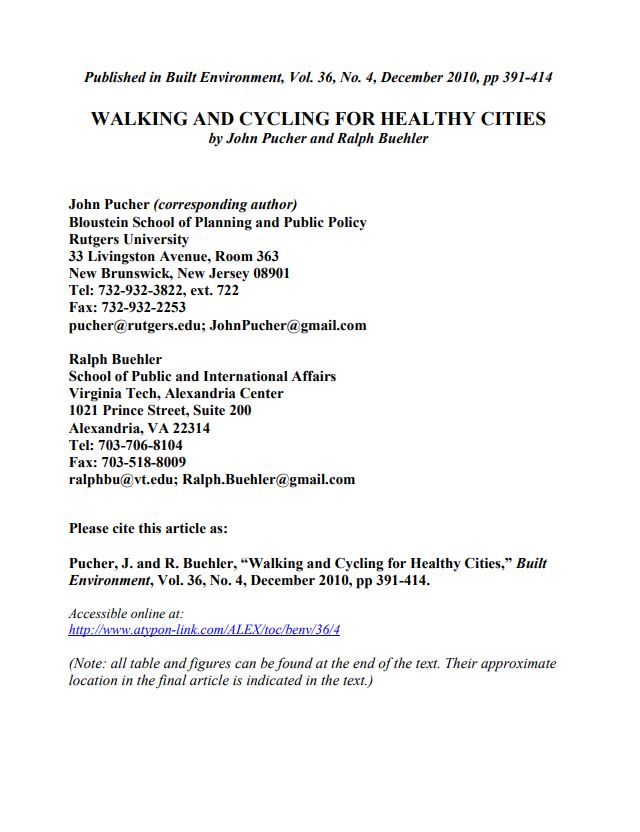Abstract
Walking and cycling are the healthiest ways to get around our cities, providing valuable physical activity for people on a daily basis. These forms of active transport also generate indirect public health benefits by reducing the use of automobiles, thus diminishing air, water, and noise pollution and the overall level of traffic danger.
This paper provides a broad overview of the role walking and cycling can play in making our cities healthier. First, we summarize the scientific evidence of the health benefits of walking and cycling. Second, we examine variations in walking and cycling levels in Europe, North America, and Australia. Third, we consider the crucial issue of traffic safety. Finally, we describe a range of government policies needed to encourage more walking and cycling: safe and convenient infrastructure such as sidewalks, crosswalks, bike paths and lanes, and intersection crossings; traffic calming of residential neighborhoods; integration with public transport; land-use policies that foster compact, mixed-use developments; people-friendly urban design; improved traffic education; strict enforcement of traffic regulations; and reductions
in motor vehicle speed limits.
